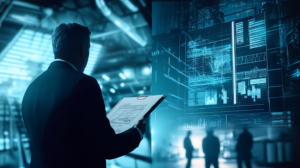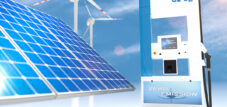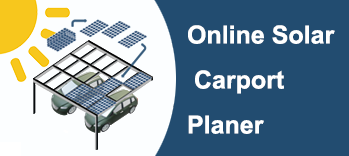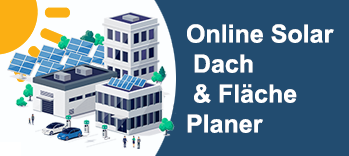China's new "national goal" and hydrogen plan: The playbook that Europe and Germany have already criminally ignored twice.
Xpert pre-release
Language selection 📢
Published on: November 4, 2025 / Updated on: November 6, 2025 – Author: Konrad Wolfenstein

China's new "national goal" and hydrogen plan: The playbook that Europe and Germany have already criminally ignored twice – Image: Xpert.Digital
Solar power, batteries, now hydrogen: How Europe is falling into the next China trap
China's strategic hydrogen offensive: The industrial policy logic of a new dependency
While Europe debates the details of its energy transition, China is quietly but strategically orchestrating an industrial takeover in the future market for green hydrogen. This is not a matter of chance, but the result of a plan that threatens to plunge Europe into a new, profound dependency – a trap that many haven't even noticed yet.
The script for this offensive is well-known and tried and tested. China has already played it out twice with overwhelming success: first with photovoltaics, where it now controls over 70% of the global market, and then with lithium-ion batteries, achieving similar dominance. The pattern is always the same: a technology is declared a strategic industry, state-guaranteed demand creates enormous production volumes, economies of scale drastically reduce costs, and ultimately, global market leadership is achieved while European competitors collapse.
Now this scenario is repeating itself with hydrogen. China already dominates global electrolyzer capacity – the key technology for producing green hydrogen – with around 60%, and produces it up to 50% cheaper than its Western competitors. Meanwhile, Europe remains structurally timid. It relies on market mechanisms where China relies on state power and guaranteed purchase volumes. It sets ambitious targets without politically resolving the crucial chicken-and-egg problem of supply and demand. The result is a fatal reluctance to invest and the risk of falling behind completely.
This article analyzes China's strategic logic, based on state-orchestrated demand, and exposes Europe's fatal miscalculation. It's about more than just an energy source—it's about the industrial autonomy of an entire continent and whether Europe sets the course for a future as a technology leader or as a tributary of China. The window of opportunity to reverse this course is rapidly closing.
Suitable for:
Is Europe asleep? How China is currently conquering the next key technology
The decision made at the Fourth Plenum of the 20th Central Committee of the Communist Party of China in October 2025 was not a footnote in a technical industry journal. It marked the beginning of a precisely orchestrated strategy that elevated hydrogen to the industry of the future, thus signaling one of the most ambitious industrial policy projects of the current decade. What follows is not improvisation, but a playbook that China has already successfully implemented twice. The question for Europe is not whether China will win. The question is whether Europe will even grasp what is happening before the course is definitively set.
Related to this:
- Beijing's new five-year plan and massive investment program: How China is challenging the global economic order
The historical context of this decision can only be understood by grasping China's approach in the two industries that have so terrified the West. With photovoltaic systems, it all began in 2006 with a formally similar resolution. At the time, this was no surprise. No one predicted that two decades later, more than 70 percent of all solar modules worldwide would originate in China. The same pattern followed with lithium-ion batteries. Elevated to the status of a strategic industry in 2010, and further defined in 2015 with binding quotas in "Made in China 2025," China now produces over two-thirds of all cells worldwide. These successes were not achieved despite state planning, but because of it. And the plans were so precise that European companies, in retrospect, can only shake their heads in disbelief that they failed to foresee the industrial tsunami.
The hydrogen sector is at precisely the same starting point. China already dominates global electrolysis capacity with approximately 60 percent, a position it will further expand in the coming years with systematic state support. China's green hydrogen production capacity is doubling regularly. In 2024, China reached approximately 125,000 tons of green hydrogen capacity per year, equivalent to half of the total global capacity. The combined capacity of the rest of the world was also around 125,000 tons. This asymmetry is not the result of market efficiencies, but rather of state orchestration.
Suitable for:
- Administration instead of visions: The hidden problem of Europe and Germany that blocks political progress
The carousel of controlled demand
The Chinese government controls production costs through the massive scaling up of its alkaline electrolyzer systems. A Chinese alkaline electrolyzer now costs about a third as much as its European or American equivalents. This cost leadership is not the result of superior technology, but rather the combination of mass production, standardized manufacturing processes, cheap labor, and targeted subsidies. China will maintain this cost leadership as long as it controls production volume. And it controls volume through government directives.
The political mechanism behind this development operates with almost mathematical precision. National funding programs are enacted. Provincial initiatives follow immediately. Binding development targets are imposed, not as outright prohibitions, but as quotas for demand and production. The chemical industry is required to source a certain percentage of its hydrogen from renewable sources by 2030. Steel producers face similar obligations. Refineries are given quotas. This isn't equal market opportunity; it's a political guarantee of demand. When the state guarantees demand, supply follows like night after day. Private capitalists simply need to calculate: if demand is secured, investment is worthwhile.
That was the secret to photovoltaics' success. Programs like "Golden Sun" not only guaranteed subsidies but also linked them to feed-in tariffs, creating a stable business model. Demand was artificial, but it was guaranteed. Private companies flocked to the industry, capacities were ramped up, and cost reductions came not only from technological breakthroughs but also from economies of scale. Within ten years, not only was the industry established, but China was the global leader. The same pattern played out with batteries. Quotas for electric vehicles were introduced, local value-added regulations were tightened, and within a decade, Chinese companies controlled over two-thirds of global lithium-ion cell production. The Europeans watched. Some tried to expand, failed, withdrew, or were acquired. Solar companies like Photowatt, once a symbol of French innovation, survived only through state support, surrounded by Chinese abundance. The European solar industry collapsed. Today, over 95 percent of the solar modules installed in the EU are imported. Technological sovereignty is gone.
The same thing will happen with hydrogen if Europe does not radically change its logic of action.
Demand as a tool of industrial policy
The core problem with hydrogen is not the technology. The technology exists. The problem is the chicken-or-egg paradox of supply and demand. Without guaranteed demand, no entrepreneur will invest in production capacity. Without production capacity, there are no affordable hydrogen prices. And without affordable hydrogen prices, demand will not scale, even with the best intentions. Europe is trying to solve this problem through market mechanisms. China is solving it through state power.
Chinese provinces have been instructed to set quotas for the use of green hydrogen. In some northwestern provinces, hydrogen usage quotas are enforced through industrial contracts. State-owned enterprises are obligated to purchase pilot quantities. This isn't an incentive; it's a mandate. And a mandate that triggers investment because the state guarantees the revenue. This will be particularly effective in sectors that already use hydrogen. Ammonia synthesis consumes about ten million tons of hydrogen globally each year. Methanol production consumes similar amounts. In China, this sector is state-directed or state-controlled. If the state decides that this hydrogen must be green, a market for green hydrogen will be created instantly. This isn't theory; it's proven Chinese practice.
A guaranteed demand of several million tons of green hydrogen per year creates a viable business model. It incentivizes companies to build electrolysis capacity. It justifies investments in hydrogen transport infrastructure. It sends signals throughout the entire value chain. Companies that manufacture components for electrolyzers can plan factories. Workforces are trained. Supply chains are stabilized. The learning effect kicks in. With every thousand tons, costs decrease. With ten thousand tons, they decrease more rapidly. With one million tons, the cost reductions are significant. These cost reductions are not just the result of engineering, but of scaling. And only the state can guarantee scaling, because only the state can create demand without risk.
This is the playing field on which China plays. Europe, on the other hand, plays a different game.
Europe's structural timidity
The European Union has set ambitious goals. By 2030, 40 gigawatts of electrolysis capacity are to be installed, which could produce around ten million tons of green hydrogen per year. Theoretically. That's a figure that looks respectable on paper. In reality, it's an illusion.
The current situation is disastrous. So far, only about 2.8 gigawatts of renewable energy capacity are under construction across the entire European Union. This falls short of the 10 gigawatts needed by 2030; it's not even half of what's required just to meet current targets. And 94 percent of this 2.8 gigawatts is concentrated in just eight countries. Germany leads with about one gigawatt, a respectable sign of commitment, but quantitatively far from what's necessary to achieve true independence. The rest of Europe remains silent. Poland, Spain, Italy, France: everywhere, untapped potential. Yet these countries have significant advantages. Spain has immense wind power capacity. France has nuclear energy. But without coordinated demand, without binding quotas, without clear investment signals, this potential remains wasted.
The cost is the crucial issue. Producing green hydrogen via electrolysis in Europe costs approximately $5.60 to $7.80 per kilogram using grid electricity, and about $4.90 to $7.80 directly using renewable energy. In China, the range is $4.20 to $5.20 using grid electricity and $3.70 to $5.20 using renewable energy. This represents a cost difference of roughly 30 to 50 percent. This difference is not insignificant; it is critical. With such margins, green hydrogen is not competitive for European companies. Industry cannot purchase it without destroying its profit margins.
The problem isn't technological, but energy-related. Electricity costs in Europe are higher. Renewable energy costs are higher. Capital costs are higher. And above all, there's uncertainty. If an entrepreneur in Germany is to invest in an electrolysis plant, they need to be able to do the math. They need to know: In five years, ten years, will I recoup my investment? The answer today is: Maybe. Maybe not. It depends on electricity prices, technological developments, competition, and subsidies, which aren't guaranteed today. This uncertainty is fatal for investments.
China doesn't even offer this uncertainty. Chinese entrepreneurs know: The state has set these demand quotas. These quotas are binding. Whoever produces this hydrogen sells it to guaranteed customers at guaranteed prices. The uncertainty disappears. The investment decision becomes straightforward. That's why Chinese companies are investing rapidly, while European companies hesitate.
The European response to this problem has so far been half-hearted. In October 2025, Germany announced six billion euros for hydrogen projects in 2026. That sounds impressive until you put it into perspective. To achieve the European targets, investments of several hundred billion euros would be necessary, spread over a decade. Six billion euros per year in Germany is a start, not a strategy. The “Hydrogen Acceleration Act,” also announced, is intended to speed up approval processes. This makes sense, but it doesn't address the core problem: companies don't want to invest because demand isn't guaranteed. Accelerating processes when there's no demand is like trying to drive a high-speed car on a non-existent road.
Our China expertise in business development, sales and marketing
Industry focus: B2B, digitalization (from AI to XR), mechanical engineering, logistics, renewable energies and industry
More about it here:
A topic hub with insights and expertise:
- Knowledge platform on the global and regional economy, innovation and industry-specific trends
- Collection of analyses, impulses and background information from our focus areas
- A place for expertise and information on current developments in business and technology
- Topic hub for companies that want to learn about markets, digitalization and industry innovations
From pioneer to laggard - is German industry on its way to second-class status?
Hydrogen on the road to electromobility
The German automotive sector, which for over 100 years stood for global success through "German Engineering," is facing existential challenges. The transition to zero-emission powertrains and competition from agile Asian companies are revealing profound weaknesses.
A book analyzes this situation and poses key questions: Why do German corporations lack basic innovations? And why does politics fail to create attractive investment conditions and instead favor certain technologies?
Key messages of the book:
- Analysis of shortcomings: It highlights the mistakes of the German automotive industry in the development of new drive technologies and examines the strategic role of China.
- Technology and energy: The book describes the advantages and disadvantages of electric drives, their connection to renewable energies and the overall energy system.
- Repeated mistakes: A central thesis is that the same mistakes that led to the decline of the German photovoltaic industry are being repeated in electromobility and hydrogen.
- Economic background: The analyses are based on the principle of "creative destruction", which is crucial for the economic success of nations.
The authors use their decades of industry experience to illustrate the connections between innovation, business, politics and the energy transition for a broad audience.
In line with this topic:
Two years too late: Europe's hydrogen window is closing
Regulation without demand
The European Union also has a fundamental problem. It is attempting to enforce green hydrogen through regulation. The Renewable Energy Directive has established quotas. This is well-intentioned, but enforcement is the issue. Many European companies in the chemical and refinery sectors can meet the quotas by importing more expensive hydrogen products. This means the quota is met, but the demand for European green hydrogen is not. In extreme cases, Europe imports methanol and ammonia from third countries where these are produced more cheaply using green hydrogen. This is not an industrial strategy; it is self-destruction.
A particularly problematic issue is the spatial mismatch between production potential and demand locations. Europe's best wind and solar resources are located in Scandinavia, Iberia, and the North Sea region. Hydrogen consumers are traditionally concentrated in Rhineland-Westphalia, Belgium, the Netherlands, and Poland. This necessitates massive infrastructure investments over long distances, a complexity that China manages more easily through centralized planning.
The technological scope: A window closes.
Today, a window of opportunity still exists, but it will close in the next two to three years. The hydrogen market is young. Technologies are not yet established. Standards are still evolving. Electrolyzer technology will continue to change. Those who invest now, who build up production now, who stimulate demand now, can develop their own strengths. Those who wait will be importing technology again in ten years.
The question of electrolyzer technology is particularly relevant here. China currently dominates alkaline electrolyzers. This is a mature technology, and China has achieved massive cost advantages through mass production. European and American strengths lie in PEM electrolysis, a proton exchange membrane technology that produces higher purity, handles intermittent energy sources better, and is better suited for advanced applications. Here, the US and Europe still have a technological lead. But this lead will not last forever. China is investing specifically in PEM electrolysis and will close this gap. In two, three, or four years, PEM electrolysis will also be cheaper in China. Then this technological advantage will also be gone.
Alkaline electrolyzer technology will form the backbone of hydrogen production for the next decade. And China will have absolute dominance in this technology. A project built today using alkaline electrolyzers secures Chinese supply chains. The company becomes dependent on Chinese suppliers. This isn't just a cost issue; it's a risk structure issue. Investments in European electrolyzer manufacturing today could reduce this dependency. Investments tomorrow will be too late.
China's strategy for electrolyzers follows the same pattern it perfected with solar cells. Chinese solar manufacturers are not just electrolyzer producers; they are diversifying into electrolysis. LONGi Green Energy, one of the world's largest solar manufacturers, has long been active in hydrogen production as well. This creates vertical integration, reduces costs, and generates synergies. European solar manufacturers? There are hardly any left. They've long since disappeared from the market. Building a European electrolyzer industry while China already has vertically integrated giants is exponentially more difficult.
Suitable for:
- White hydrogen-German energy coup in northern Bavaria: Natural hydrogen transforms the energy transition?
Infrastructure as a strategic bottleneck
A more subtle, but no less crucial, problem is the infrastructure. Hydrogen is difficult to transport. The molecule is small, it perforates metal pipelines, and it cannot simply be loaded into tank trucks. It must either be compressed, which incurs high costs, or transported in liquid form, which requires extreme cooling. Or it is converted into derivatives such as ammonia or methanol, which involves energy losses.
China has a decisive advantage in this infrastructure issue: the geographical concentration of production and demand. The major hydrogen producers will emerge in the northwestern provinces, where renewable energy sources are abundant. The major consumers are located in the east and northeast. China is building hydrogen pipelines, but also alternative infrastructure. Ammonia pipelines are under construction. The state sector can centrally coordinate this, determine pipeline routes, and plan investments. This is a coordination nightmare for the private sector, but a routine task for a centralized state.
Europe faces the opposite problem. The best wind resources are in Scandinavia and the North Sea region. The best solar resources are in Southern Europe. The hydrogen industry is located in Germany, the Netherlands, and Belgium. The energy-intensive industries requiring hydrogen are concentrated in Rhineland-Westphalia, Poland, and Eastern Europe. This means that hydrogen has to be transported over long distances. This is expensive. This is infrastructure-intensive. The planned “European Hydrogen Backbone” is intended to comprise approximately 50,000 kilometers of pipelines by 2040, of which about 60 percent will be repurposed existing infrastructure and 40 percent new construction.
When considering the repurposing of existing gas pipelines, it is crucial to understand that hydrogen, being a smaller molecule, leads to steel embrittlement. Not all existing pipelines can be converted for hydrogen transport without extensive technical upgrades. While the theoretical repurposing of existing pipelines from Algeria or other regions is infrastructurally appealing, it ultimately fails due to technical limitations and political complexities. The compression required for hydrogen transport is already factored into transport cost calculations – not as a separate component to be added on.
The total investment volume for the European hydrogen backbone is estimated at 80 to 143 billion euros, spread over one and a half decades – about ten billion euros per year for the whole of Europe, for an infrastructure that does not itself produce hydrogen atoms.
Transport costs via pipeline over 1,000 kilometers are approximately €0.11 to €0.21 per kilogram – these costs already include the necessary compression. With a hydrogen price of €5 to €7 per kilogram, transport alone accounts for about 2 to 4 percent of the total price. Adding the costs for storage and local distribution, these additional infrastructure components can together represent about 5 to 15 percent of the price. It is analytically imprecise to lump these various cost components together under the umbrella term "infrastructure" – they must be considered separately, as they have different technical and economic characteristics.
This infrastructure asymmetry is the silent killer of Europe's hydrogen strategy. While China can plan with geographical focus, Europe has to coordinate across continental distances. This isn't impossible, but it's expensive, time-consuming, and vulnerable. A blockage in one country can paralyze entire transport corridors. A delay in investment in one country can delay projects in others. The coordination risk is high. China's centralized structure is an advantage here, not only economically but also politically.
Suitable for:
Supply chains and the structural dependency trap
What is particularly relevant with hydrogen is the question of supply chains for its production. A hydrogen electrolysis plant is not just an electrolyzer. It is a complex system comprising an electrolyzer, transformer, safety systems, control electronics, storage systems, and compression units. Each of these components is manufactured somewhere in the world. And today, after five years of disruption in global supply chains, these components have become a strategic issue.
China has a structural advantage here: it produces 85 percent of the world's lithium-ion battery cells. This translates into expertise, manufacturing capacity, and supply chain know-how. A battery factory and a hydrogen electrolysis plant are not the same, but there are synergies in electrical engineering, control and management systems, and materials science. Chinese battery manufacturers are moving into hydrogen production. This is vertical integration.
This is a nightmare for Europe. The European battery industry is already struggling to compete with Chinese rivals. Tesla produces batteries in Grünheide near Berlin, using domestic technology. But it's Tesla, not a European company. Traditional European automakers have largely outsourced their battery production to Chinese firms or entered into partnerships. Volkswagen has partnerships with major Chinese battery manufacturers, as does Daimler. This was a pragmatic decision given their own technological lag. But it also means that Chinese manufacturing logic and standards are coming to Europe. If this cooperation extends to the hydrogen value chain, European companies will become dependent. They will purchase hydrogen electrolyzers developed according to Chinese standards, produced with Chinese components, and manufactured through Chinese supply chains.
This isn't meant maliciously. This isn't part of a conspiracy. This is economics taking its course. But the strategic consequence is: Europe will not become a hydrogen producer, but a hydrogen consumer with Chinese dependencies. Just like with batteries. Just like with solar panels. China's strategy has worked.
The silent player: Hydrogen in the transport sector as a strategy differentiator
China is pursuing a radically different strategy for hydrogen in the transport sector than Europe. While European countries are primarily driving development through market mechanisms and climate narratives, China is relying on massive state control mechanisms and infrastructure development as an instrument of hegemony. The Chinese government is specifically promoting hydrogen regions ("city clusters"), investing in the construction of hundreds of hydrogen refueling stations, pilot fleets, and the vertical integration of the entire value chain – from high-pressure tanks to fuel cells. The primary goal is not to achieve immediate cost efficiency in end-use applications, but rather to secure technological lock-in and geopolitical options.
Unlike in Europe, where high hydrogen prices have so far generated little sales in the transport sector, China's strategy is long-term: Infrastructure development and scaling are intended to reduce both costs and market dependencies. In the long run, this creates industrial and political leverage that will allow China to shape not only its domestic market but also export markets and international standards. The mobility sector thus becomes a tool for geopolitical shaping, not merely another business area. Actual cost sensitivity only plays a role in the second phase – what is decisive is China's centralized speed and integrative capacity.
Note: The transport sector as a hydrogen application area deserves a separate analysis. China's massive investments in hydrogen vehicles – over 7,000 units in 2024 – follow a different logic: infrastructure dominance and technological leadership rather than pure cost efficiency. Why China is taking a different approach here and what implications this has for European transport strategies would need to be addressed in a separate article.
Suitable for:
Political culture and the factor of time
There is a deeper cultural component to China's success in industrial strategy. China thinks in decades. The five-year plans are not election-period plans. They are genuine strategic extensions of a logic pursued over 20 or 30 years. Hydrogen is a future goal in 2025. By 2030, it will be an established industry. By 2035, it will be a strategic offering. This is not a promise made today; these are proven mechanisms that have already worked well for solar and batteries.
The US has similar long-term capabilities, with investments in infrastructure, technologies, and strategic industries spanning decades. America has recognized the importance of hydrogen, the importance of electrolysis. The Inflation Reduction Act provided funding for hydrogen production credit and hydrogen infrastructure. But America is also investing because America wants to protect its industries. And America, unlike Europe, has the authority and the will to do so.
Europe is caught in a bind. It thinks in terms of legislative terms. A German chancellor has a four-year term. A French president has five. A European Commission mandate lasts five years. That's not long enough to pursue a genuine industrial strategy. It's long enough to announce it. It's not long enough to implement it. That's why Europe regularly announces ambitious goals and regularly misses them. The hydrogen targets for 2030 will be missed. The solar targets for 2020 will be missed. The battery targets for 2025 will be missed. This isn't a failure of individual politicians; it's a failure of a system that thinks too short-term to build long-term industries.
This is Europe's structural problem. And it cannot be solved with isolated measures. It would require a transformation of political culture, a sacrifice of short-term profitability for long-term independence, a willingness to subordinate private market forces to overarching strategic goals, even if this is more expensive in the short term. This is the sacrifice China has made. This is the sacrifice the US is willing to make. This is the sacrifice Europe is not willing to make.
Therefore, Europe's hydrogen strategy will remain a dream that fragments in reality.
Dependence as a structural trap
What's particularly problematic is that once established, dependencies are difficult to break. If European companies start buying hydrogen electrolyzers from Chinese manufacturers, they will establish these supply chains, build personal relationships, and standardize operations. Then, they'll make repeat purchases from the same manufacturer because it's simpler. It's cheaper. It's familiar. It's reliable. Ten years later, it will be impossible to simply switch to European manufacturers. They would be more expensive, they would be unknown, and they would be subject to delays.
This is the pattern we're seeing with batteries. A German automaker that has entered into a battery partnership with a Chinese manufacturer won't simply switch to a European one. This wasn't easy during the energy transition, when batteries became a core product. It won't be easy with hydrogen either.
The biggest mistake would be to think this window of opportunity will remain open forever. It will remain open for approximately two to three years. In two to three years, Chinese electrolyzer manufacturing will have stabilized. In two to three years, Chinese companies will not only be building capacity but also exporting. In two to three years, European companies will have already established Chinese supply chains. In two to three years, it will be too late.
The time to build a genuine European hydrogen industry is now. Not next year. Not in 2027. Now.
The strategic dilemma
What Europe needs to understand today is simple: hydrogen is not just an energy source; it's a question of autonomy. If Europe doesn't produce its own hydrogen but imports it or remains dependent on Chinese electrolyzers, then Europe will have entered the next phase of its industrial dependency. This is the same scenario that played out with solar panels. This is the same scenario that is playing out with batteries.
The ironies of the European hydrogen strategy are numerous. The European Green Deal proclaims independence and sustainability. However, achieving these goals will lead to new dependencies. Energy independence through hydrogen will become dependence on Chinese electrolyzers. Technological sovereignty will become dependence on Chinese supply chains. This is not a paradox; it is logic.
🎯🎯🎯 Benefit from Xpert.Digital's extensive, five-fold expertise in a comprehensive service package | BD, R&D, XR, PR & Digital Visibility Optimization

Benefit from Xpert.Digital's extensive, fivefold expertise in a comprehensive service package | R&D, XR, PR & Digital Visibility Optimization - Image: Xpert.Digital
Xpert.Digital has in-depth knowledge of various industries. This allows us to develop tailor-made strategies that are tailored precisely to the requirements and challenges of your specific market segment. By continually analyzing market trends and following industry developments, we can act with foresight and offer innovative solutions. Through the combination of experience and knowledge, we generate added value and give our customers a decisive competitive advantage.
More about it here:
Your global marketing and business development partner
☑️ Our business language is English or German
☑️ NEW: Correspondence in your national language!
I would be happy to serve you and my team as a personal advisor.
You can contact me by filling out the contact form or simply call me on +49 89 89 674 804 (Munich) . My email address is: wolfenstein ∂ xpert.digital
I'm looking forward to our joint project.






























